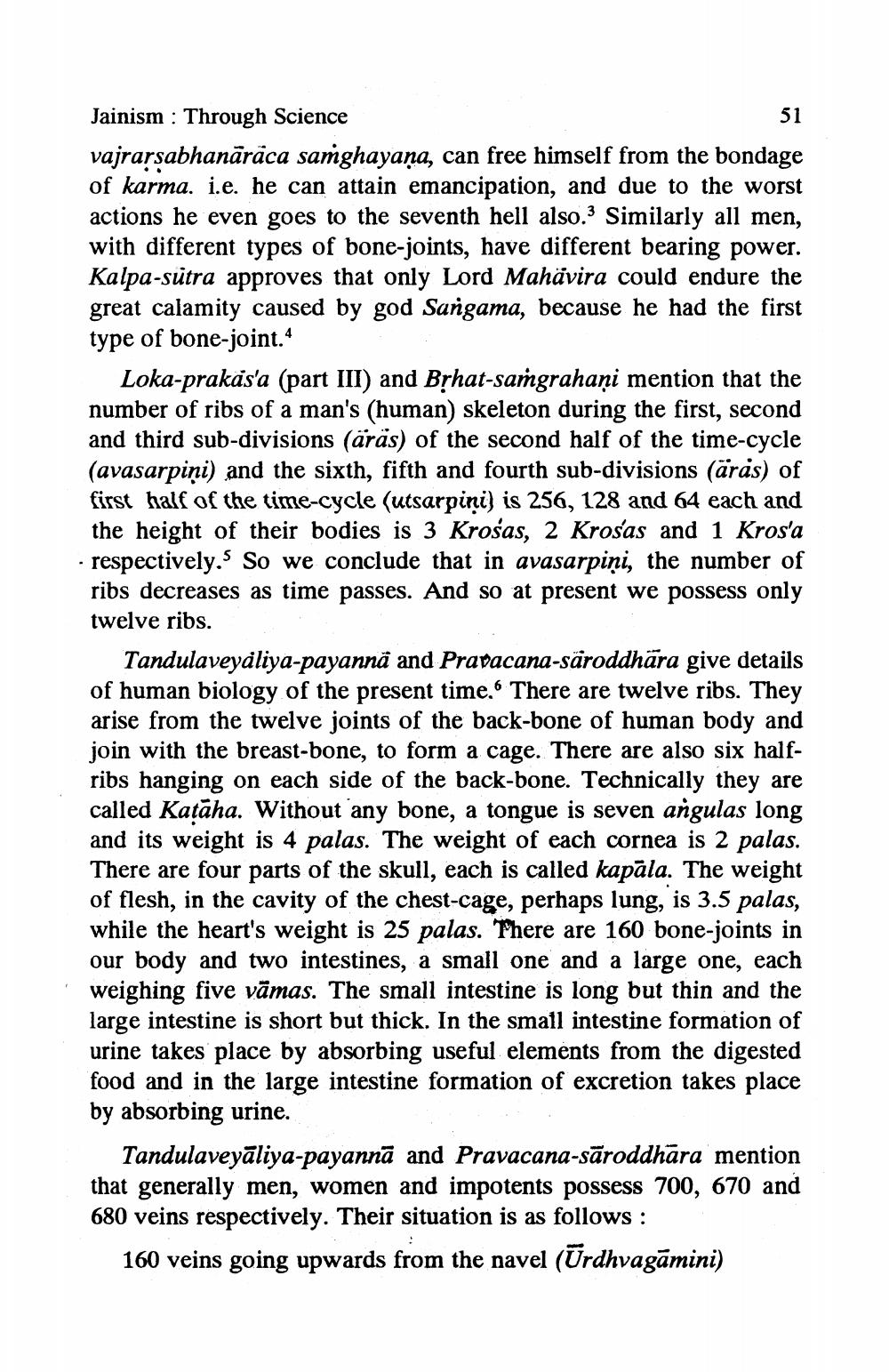________________
Jainism : Through Science
51 vajrarsabhanārāca samghayana, can free himself from the bondage of karma. i.e. he can attain emancipation, and due to the worst actions he even goes to the seventh hell also.3 Similarly all men, with different types of bone-joints, have different bearing power. Kalpa-sutra approves that only Lord Mahävira could endure the great calamity caused by god Sangama, because he had the first type of bone-joint.
Loka-prakas'a (part III) and Brhat-saṁgrahaņi mention that the number of ribs of a man's (human) skeleton during the first, second and third sub-divisions (äräs) of the second half of the time-cycle (avasarpiņi) and the sixth, fifth and fourth sub-divisions (äras) of first half of the time-cycle (utsarpiņi) is 256, 128 and 64 each and the height of their bodies is 3 Krośas, 2 Krosas and 1 Kros'a · respectively. So we conclude that in avasarpiņi, the number of ribs decreases as time passes. And so at present we possess only twelve ribs.
Tandulaveyaliya-payanna and Pravacana-säroddhāra give details of human biology of the present time. There are twelve ribs. They arise from the twelve joints of the back-bone of human body and join with the breast-bone, to form a cage. There are also six halfribs hanging on each side of the back-bone. Technically they are called Katāha. Without any bone, a tongue is seven angulas long and its weight is 4 palas. The weight of each cornea is 2 palas. There are four parts of the skull, each is called kapāla. The weight of flesh, in the cavity of the chest-cage, perhaps lung, is 3.5 palas, while the heart's weight is 25 palas. There are 160 bone-joints in our body and two intestines, a small one and a large one, each weighing five vāmas. The small intestine is long but thin and the large intestine is short but thick. In the small intestine formation of urine takes place by absorbing useful elements from the digested food and in the large intestine formation of excretion takes place by absorbing urine.
Tandulaveyāliya-payannā and Pravacana-sāroddhāra mention that generally men, women and impotents possess 700, 670 and 680 veins respectively. Their situation is as follows :
160 veins going upwards from the navel (Urdhvagāmini)




